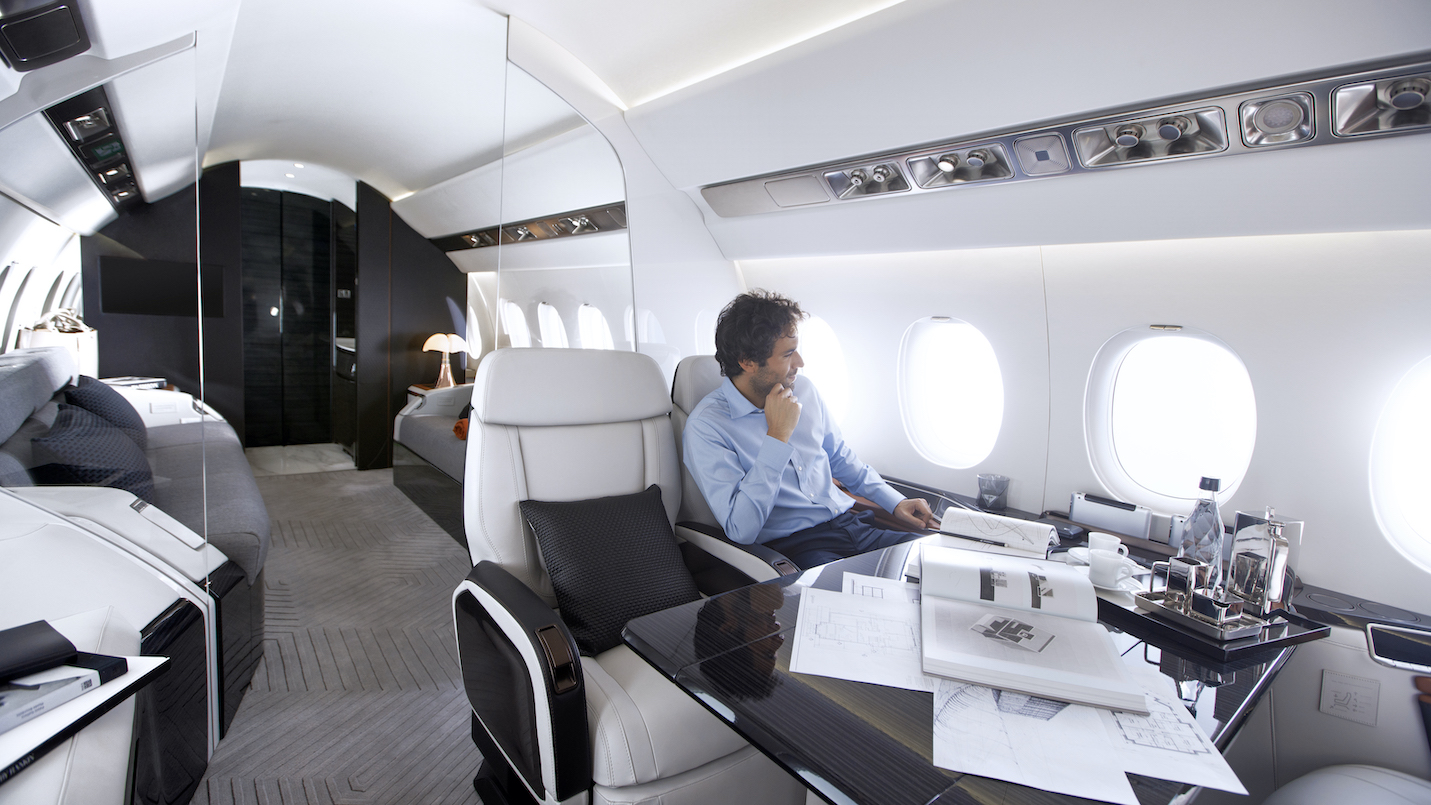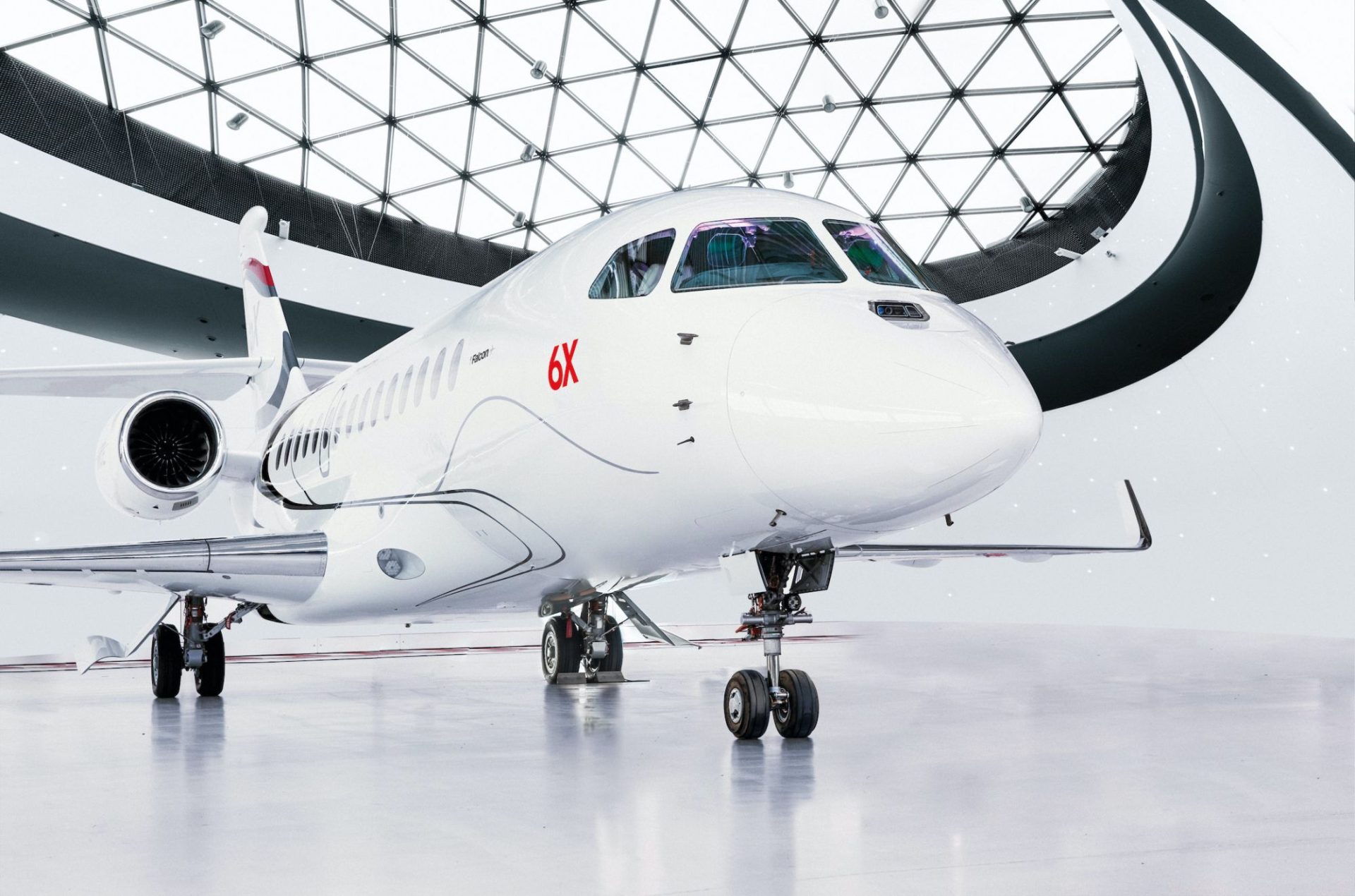Plane talk
Dassault brings the spirit of Top Gun to private jet travel.
19 January 2021
With their unique fighter jet heritage, Falcons have an undeniable technological advantage. Here are just five reasons why they deliver a better passenger experience, too.
Design philosophy
Strength, lightness and agility are qualities especially prized in fighter aircraft. A look at the Dassault Rafale fighter reveals a sleek, compact aircraft that can fly at speeds up to Mach 1.8, roll at 270 degrees per second, and carry a massive external load of 20,000 pounds.
Dassault Aviation brings the same design priorities to its business jets. Falcons offer large cabins with a relatively small ramp presence. Falcons seem tauter, more graceful and compact than those of competing aircraft, in part because their adaptable wings are smaller.
Reduced wing area saves structural weight, minimises drag and reduces the effects of turbulence, yielding a smoother ride. On approach, high lift devices are extended, allowing slower, safer landings with extra precise handling.
Pilots rave about the crisp handling of Falcons. The bottom line for passengers is a well-mannered aircraft. One that offers ultra-smooth flight in all conditions and the ability to get in and out of smaller, confined airports that are typically inaccessible to large business jets.
Digital design tools
All Dassault aircraft are designed using the latest versions of CATIA computer-aided design and manufacturing (CAD/CAM) software. It so happens that CATIA, the world’s leading engineering and design software, is produced by a Dassault sister company, Dassault Systèmes.
CATIA was initially developed to improve the design and production process for fighter aircraft. With CATIA and now the 3DExperience platform – the new-generation product management lifecycle program recently introduced by Dassault Systèmes – engineers could innovate and iterate designs more quickly, adding strength where needed and reducing weight wherever possible, creating lightweight and strong airframes.
It is particularly useful in precision manufacturing, ensuring products come out the same way every time, with zero random error. A level of precision visible in the flawless external lines of every Falcon, but even more
so when peeking under its skin.
It is true that other aircraft manufacturers use Dassault Systèmes software.
In fact, it has become the world 3D design standard – no bizjet maker has longer or deeper experience with these advanced tools than Dassault; something that allows the company to keep one step ahead of the competition.
Top engineers and test pilots
Think of CATIA as a piano and Dassault engineers as concert pianists, playing different kinds of music but each using the same instrument. Though serving vastly different markets, Dassault fighters and business jets are designed by the same engineers and built to the same exacting production standards. They also share tools and best practices from the same Dassault Systèmes software suite.
Similarly, Dassault’s fighter test pilots are also its business jet test pilots – and they’re a demanding lot, providing invaluable input into the design of new Falcons and identifying and adapting the latest fighter-derived technologies to improve Falcon handling and safety.
Digital flight control technology
The first business jet equipped with digital flight control technology was Dassault’s Falcon 7X, introduced in 2005. The new Falcon 8X ultra-long range trijet, derived from the 7X, also features a digital flight control system, as will all subsequent Falcon models.
The Falcon digital flight control system (DFCS), which is referred to by many as a fly-by-wire system, reduces pilot workload by minimising constant small input corrections to maintain flight-path trajectory. DFCS also responds automatically and more smoothly to turbulence, helping to further smooth out the ride for passengers.
Dassault began developing digital control technology for Mirage fighter jets way back in the 1970s.
Its closed-loop system is more automated than in other business jets, eliminating, for example, the need for the pilot to constantly trim off control pressure as speed and attitude change.
Closed-loop DFCS is a direct spin-off of fighter design, where the pilot has to select a trajectory as quickly as possible so he can attend to other things going on in a potential combat situation.
Head-up displays and Enhanced Vision Systems
Like digital flight control, head-up displays were invented for fighter pilots so they could keep their eyes on the flight instruments without looking down into the cockpit.
The first manufacturer to install an HUD on a business jet (the Falcon 2000), has had more experience refining these systems for business jet use than anyone else.
The company’s most advanced HUD – the FalconEye Combined Vision System – provides an accurate picture of the surrounding terrain as well as the airport environment, day or night, no matter the weather conditions. It also greatly enhances safety during flight and facilitates poor-visibility landings.
The FalconEye Combined Vision System is able to do this by blending a virtual terrain database with inputs from six cameras, capturing light from the visual spectrum to infra-red. It is the first time in business aviation that virtual and enhanced vision capabilities have been combined in a single HUD.
Moreover, FalconEye allows the pilot to fly approaches into almost any airfield, whether or not it is equipped with the kind of precision instrument landing systems found at larger airports.
In addition, with FalconEye, pilots can safely descend to within 30 metres of the runway before picking up natural vision cues.
Falcon owners and passengers may not always be aware of all of this fighter jet technology transfer, however, it is certain that many savour the fighter mystique attached to the Dassault trademark. Some may even regard their Falcon as their own private air force.
Either way, there’s no doubt owners and passengers alike appreciate the many flying benefits that the storied Dassault fighter heritage affords.


















